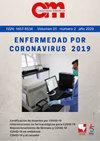医源性膀胱损伤:一家机构1999-2009年在治疗和结果方面的十年经验,吉隆坡,马来西亚
IF 0.7
4区 医学
Q3 MEDICINE, GENERAL & INTERNAL
引用次数: 2
摘要
简介:本病例系列回顾性回顾了1999年至2009年十年间在马来西亚Kebangsaan大学医学中心治疗的医源性膀胱损伤病例。材料和方法:回顾性回顾手术室数据库,获得膀胱损伤手术修复患者的姓名和注册号。排除非手术原因造成膀胱损伤的患者(如骨盆骨折、钝性创伤或骨盆穿透性损伤所致的外伤性膀胱损伤)。结果:治疗医源性膀胱损伤12例。在妇科手术中共发生8例损伤。下段剖宫产术中有5例损伤,全腹子宫切除术和双侧输卵管卵巢切除术中有2例损伤,Burch阴道悬吊术中有1例损伤。剖宫产伤5例中有4例有剖宫产史。其余4例非妇科相关损伤中,2例发生在疝成形术期间,1例发生在探查肠皮瘘期间,另1例发生在腹腔镜阑尾切除术期间。结论:有多次剖宫产史的剖宫产患者应注意医源性膀胱损伤。医源性损伤应术中识别,以便尽早修复和获得最佳结果。这些损伤通过上升膀胱造影得到充分评估。采用可吸收缝线持续修复,并辅以囊泡周围引流和膀胱导尿,效果良好。本文章由计算机程序翻译,如有差异,请以英文原文为准。
Iatrogenic bladder injury: A single institution´s ten-year experience in treatment and outcome 1999-2009, Kuala Lumpur, Malaysia
SUMMARY Introduction: This case series is a retrospective review of iatrogenic bladder injuries treated at our institution Universiti Kebangsaan Malaysia, Medical Centre, over a ten-year period, from 1999 to 2009. Materials and methods: A retrospective review of the operating theater database yielded the names and registration numbers of patients who underwent operative repair of bladder injuries. Patients who sustained bladder injuries due to non- surgical reasons (such as traumatic bladder injuries due to pelvic fractures, blunt trauma or penetrating injuries to the pelvis) were excluded. Results: There were 12 cases of iatrogenic bladder injury treated during this time. A total of eight injuries occurred during gynaecological surgery. Five injuries occurred during lower segment caesarean section, two injuries during total abdominal hysterectomy and bilateral salpingo-oopherectomy, and a single injury during Burch colposuspension. Four out of the five injuries during caesarian section had a history of previous caesarian section. Of the four remaining non-gynaecological related injuries, two injuries occurred during hernioplasty, one during exploration of an enterocutaneous fistula and the other was during laparoscopic appendicectomy. Conclusion: Iatrogenic bladder injury should be anticipated in patients undergoing caesarean section who have had multiple previous caesarean sections. Iatrogenic injuries should be identified intra-operatively to enable early repair and the best outcome. These injuries were adequately assessed by ascending cystography. Continuous repair with absorbable sutures together with perivesicle drainage and bladder catheterization produces good outcome.
求助全文
通过发布文献求助,成功后即可免费获取论文全文。
去求助
来源期刊

Colombia Medica
MEDICINE, GENERAL & INTERNAL-
CiteScore
2.00
自引率
0.00%
发文量
11
审稿时长
>12 weeks
期刊介绍:
Colombia Médica is an international peer-reviewed medical journal that will consider any original contribution that advances or illuminates medical science or practice, or that educates to the journal''s’ readers.The journal is owned by a non-profit organization, Universidad del Valle, and serves the scientific community strictly following the International Committee of Medical Journal Editors (ICMJE) and the World Association of Medical Editors (WAME) recommendations of policies on publication ethics policies for medical journals.
Colombia Médica publishes original research articles, viewpoints and reviews in all areas of medical science and clinical practice. However, Colombia Médica gives the highest priority to papers on general and internal medicine, public health and primary health care.
 求助内容:
求助内容: 应助结果提醒方式:
应助结果提醒方式:


